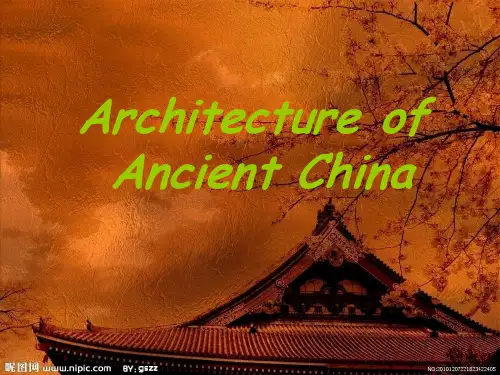中国古建筑(英文) ppt
- 格式:ppt
- 大小:2.16 MB
- 文档页数:31
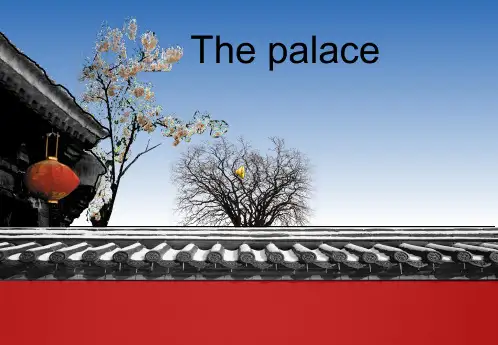
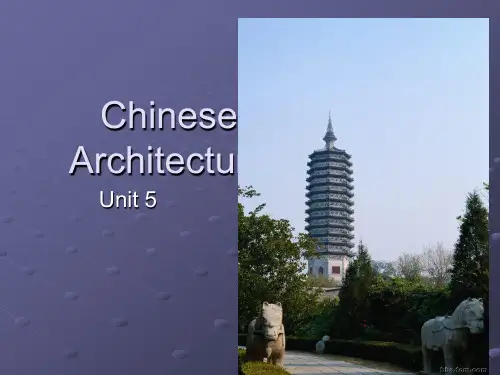

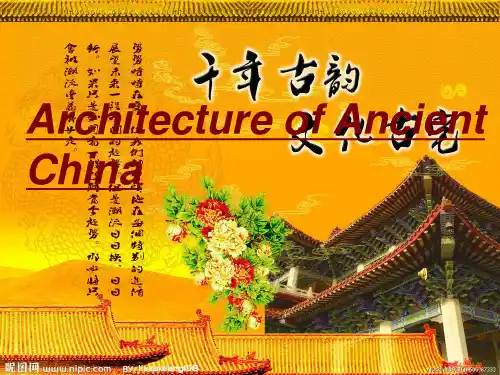

![中国建筑英文介绍[优质ppt]](https://uimg.taocdn.com/8e54f89ed5bbfd0a795673ea.webp)

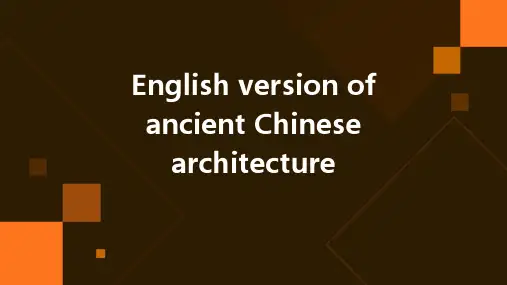

故宫英文介绍pptThe Forbidden City, also known as the Palace Museum, is a UNESCO World Heritage site located in the heart of Beijing, China. It was the imperial palace of the Ming and Qing dynasties for over 500 years, serving as the political and ceremonial center of Chinese government. The Forbidden City is a symbol of China's rich cultural heritage and a testament to the country's imperial past.Constructed in the early 15th century, the Forbidden City covers an area of 180 acres and consists of over 980 buildings with approximately 9,000 rooms. The complex is surrounded by a 26-foot high wall and a moat, creating a sense of grandeur and isolation from the outside world. The architecture of the Forbidden City is a blend oftraditional Chinese design principles with unique imperial elements, such as yellow roof tiles and intricate carvings.The Forbidden City is divided into two main sections: the Outer Court and the Inner Court. The Outer Court wasused for ceremonial and administrative purposes, while the Inner Court was the private residence of the emperor andhis family. Each section contains numerous halls, pavilions, courtyards, and gardens, showcasing the grandeur and opulence of the imperial lifestyle.Visitors to the Forbidden City can explore the various halls and courtyards, each with its own uniquearchitectural style and historical significance. Highlights include the Hall of Supreme Harmony, the Hall of Central Harmony, and the Hall of Preserving Harmony, which wereused for important state ceremonies and events. TheImperial Garden, located at the rear of the complex, offers a peaceful retreat from the bustling city streets.In addition to its architectural and historical significance, the Forbidden City houses a vast collectionof cultural artifacts and treasures, including paintings, ceramics, calligraphy, and imperial robes. The Palace Museum has over 1.8 million pieces in its collection, with only a fraction on display at any given time. Theseartifacts provide insight into the artistic, cultural, andpolitical achievements of the imperial dynasties that once ruled China.Overall, the Forbidden City is a must-visit destination for anyone interested in Chinese history, culture, and architecture. It stands as a testament to the country's imperial past and serves as a reminder of China's rich cultural heritage. With its stunning architecture, expansive grounds, and impressive collection of artifacts, the Forbidden City continues to captivate visitors from around the world and remains a symbol of China's enduring legacy.。
